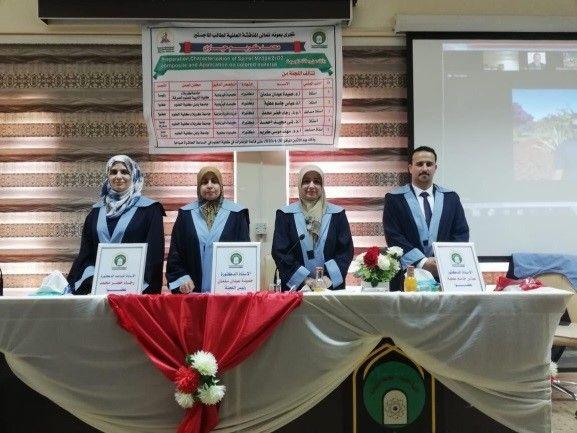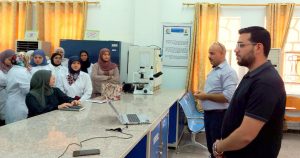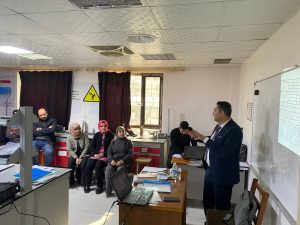The Faculty of Science at Kerbala University has discussed the M.A. thesis entitled “Preparation, Characterization of Spinel Mn3O4 / ZrO2 Composite and Application on Colored Material”
It has been done via the zoom program and according to the directives of the Ministry of Higher Education due to the Corona pandemic,
The thesis, submitted by the student Muhammad Karim Hiawi, aims at preparing the lecand (L) in Diazafluoren-9-one 11 (4,5) and the complex (Fe-L3) as a colored solution, studying the efficacy using it in adsorption and determining the best conditions
The researcher states that the practical part of his research has been divided into three main parts. The first part, the lycand (L) is prepared in Diazafluoren-9-one 11 4,5 ((DFO) which is used in the field of forensic evidence to show light fingerprints and weak blood stains and the preparation of the FeL3 complex. The lecand and complex preparation was confirmed by a change in melting points, FT-IR spectrum and UV-Visible spectrum scanning. FeL3 complex was found in octahedral form as demonstrated using the molar ratio method and it was found that the ratio between Fe (II) and L was 1: 3.
The second part focuses on preparing the Mn3O4 spinel using the common precipitation method. As the surface of the Mn3O4 is modified by choosing ZrO2 to improve its properties. A series of overlays 1, 2 and 3 of spinel Mn3O4 combined with ZrO2 was prepared in various proportions (1: 2, 1: 3 and 1: 4) using ultrasound technology as an easy and environmentally friendly method.
In the third part, an application of the studied photocatalysts was made. It was found that the chromatography of the FeL3 complex at the value of acid function 4 with the addition of 0.5% H2O2 using spinel Mn3O4 and commercial ZrO2 and composites (1, 2 and 3), as it was found that compound 3 was the best compared to the compounds (1 and 2) because it had a lower crystalline average rate From 12.994 nm. The FeL3 complex was found to be very stable, so removing it with spinel Mn3O4, ZrO2 and composite 3 only succeeded after adding 0.5% of H2O2 as a strong oxidizing agent. It was found that the optimum weight of the cofactors studied in this photosynthetic reaction was (0.2 g / 50 mL, 0.25 g / 50 mL and 0.2 g / 50 mL) for Mn3O4 spinel, ZrO2 and composite 3, respectively.
































































